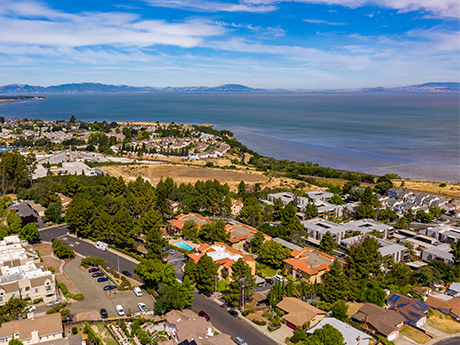— By Anthony Pappageorge, Managing Director, NorthMarq —
The Bay Area multifamily market is showing signs of stabilizing, although there are some persistent challenges present in the market that will impact operations. With 2024 likely to be a period of slower economic growth, there will be a continued emphasis on multifamily property operations.
The challenges in the Bay Area rental market have shifted somewhat in recent years. In the period immediately following the pandemic, owners of rental properties were focused on maintaining occupancy levels and rent collections. In the current environment, added pressures surrounding rising property insurance costs and the prospect for additional rent control measures are increasing uncertainty to the Bay Area multifamily market.
Occupancy: A Bit Lower than Usual, but Bouncing Back
One multifamily property metric where the Bay Area routinely outperforms nearly every other part of the country is occupancy levels. Conditions remain tight at the beginning of 2024, with average occupancies ranging from about 96 percent in the South Bay and San Francisco, to about 94.5 percent in the East Bay. Current occupancies are about 50 basis points lower, on average, than in 2019. This is welcome news to operators who saw rates decline to about 90 percent in 2020 as residents migrated to less expensive markets while full-time remote work gained momentum.
Occupancies have returned closer to historical norms, but there will likely be some greater supply side pressures emerging in 2024 — creating a more competitive landscape for apartment operators. This year could mark a cyclical high in deliveries of new units across the Bay Area. Projects totaling around 12,500 units are on pace to be completed this year, up from averages of about 8,500 units per year since 2015. The competitive impact from new supply will be something that operators will monitor and adjust to as new units are marketed for lease and ultimately come online.
Rents, Rent Control
A looming election means the potential for ballot measures to impact the rental market. Rent control measures routinely come up for debate in the Bay Area. While it is still early, at least four cities have submitted proposals for rent control and other tenant protections to appear on the ballot in November. These measures would generally aim to limit rent increases to between 3 percent and 5 percent. They would also be more restrictive than the statewide 2019 Tenant Protection Act, which imposed a 10 percent maximum increase on most existing properties.
Market rents have generally trended lower in recent months. Current rents are down between 2 percent and 3.5 percent throughout the Bay Area from earlier highs recorded in the second half of 2022. With apartment operators expected to place a greater emphasis on tenant retention in 2024, rents will likely remain near their current ranges throughout the remainder of this year.
Outlook
The remainder of this year will likely result in some mixed conditions in the Bay Area multifamily markets. Apartment owners will face some operational challenges, with rents unlikely to gain much traction and costs on the rise in response to insurance premiums spiking by as much as 15 percent to 30 percent in many cases.
These operational challenges and some looming debt maturities may create opportunities in the investment markets. Transaction counts dropped by more than 30 percent from 2022 to 2023, but we have already seen a more active start to this year. Cap rates have come up — averaging more than 5 percent in recent quarters — and there will likely be a handful of properties that become available for acquisition that were purchased when underwriting was at its most aggressive, using short-term variable-rate debt.


